Nationality American Role Artist Name Peter Voulkos | Movement Abstract Expressionist Period Abstract expressionism | |
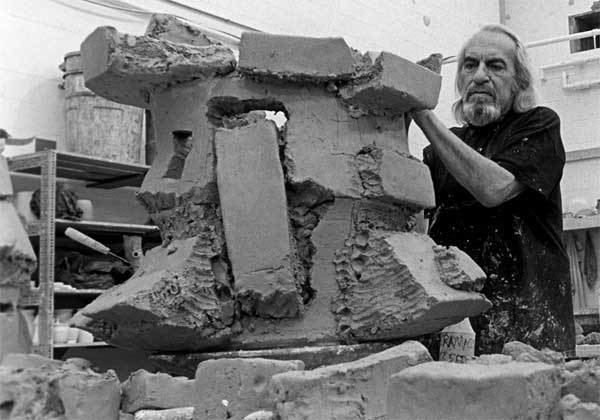 | ||
Full Name Panagiotis Voulkos Artwork Tientos, Hiro II, Anada, Blue Line, Ceramic Drawing, Untitled, Red Through Black Awards Guggenheim Fellowship for Creative Arts, US & Canada Similar People Paul Soldner, Robert Arneson, John Balistreri, Franz Kline, Willem de Kooning | ||
Peter voulkos the otis group revolutions of the wheel
Peter Voulkos (popular name of Panagiotis Voulkos; January 29, 1924 – February 16, 2002) was an American artist of Greek descent. He is known for his abstract expressionist ceramic sculptures, which crossed the traditional divide between ceramic crafts and fine art. While his early work was fired in electric and gas kilns, later in his career he primarily fired in the anagama kiln of Peter Callas, who had helped to introduce Japanese wood firing aesthetics in the United States.
Contents
- Peter voulkos the otis group revolutions of the wheel
- Peter voulkos working in clay preview
- Biography
- Death
- Personal life
- Legacy
- References
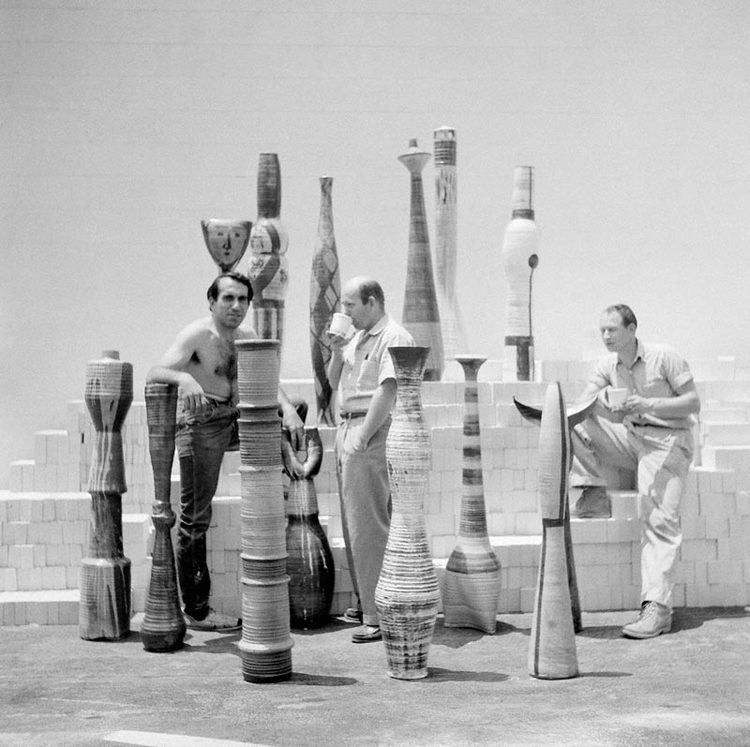
Peter voulkos working in clay preview
Biography
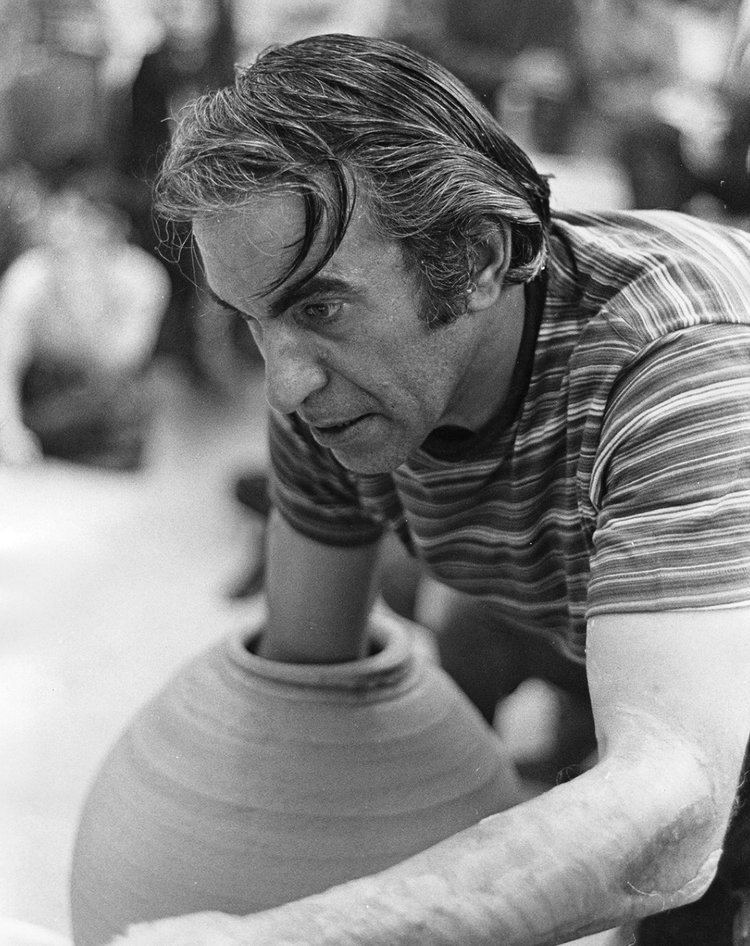
He was born as Panagiotis Harry Voulkos, the third of five children to Greek immigrant parents, Aristovoulos I. Voulkopoulos, anglicized and shortened to Harry (Aris) John Voulkos and Effrosyni (Efrosine) Peter Voulalas, in Bozeman, Montana.
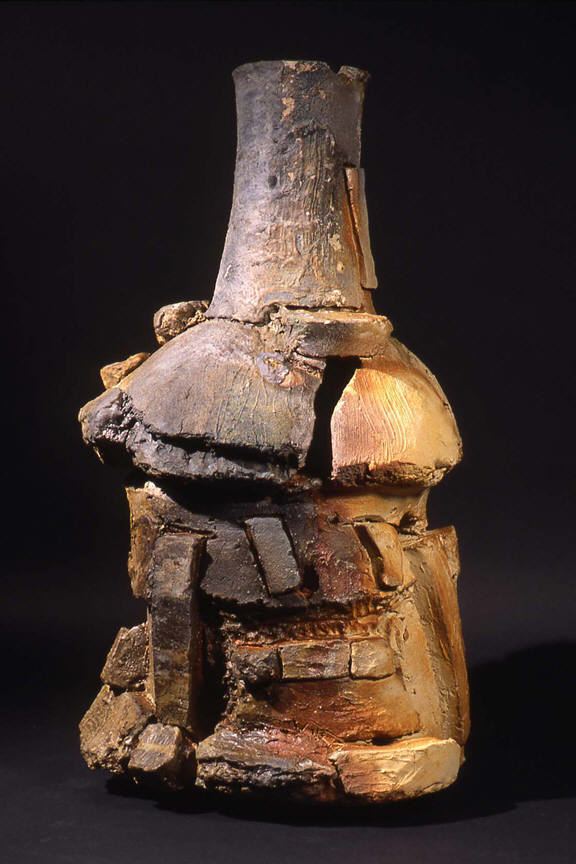
After serving in the United States Army during the Second World War, Voulkos studied painting and printmaking at Montana State College, in Bozeman (now Montana State University), where he was also introduced to ceramics; Frances Senska, who established the ceramic arts program there around that time, was his teacher. He subsequently earned an MFA degree in ceramics from the California College of the Arts and Crafts, in Oakland. Afterwards he returned to Bozeman, and began his career in a pottery business with classmate Rudy Autio, producing functional dinnerware.
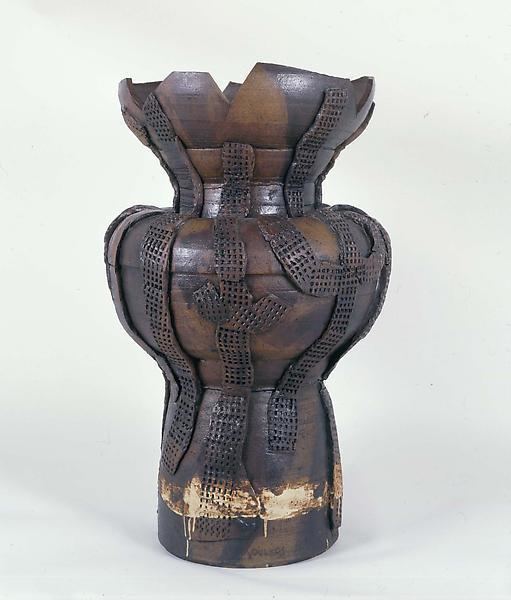
In 1951 Voulkos and Autio became the first resident artists at the Archie Bray Foundation for the Ceramic Arts, in Helena, Montana. It is from his time there (Resident Director, 1951-1954) that the lineage of his mature work, later in full bloom during his tenure at the Otis Art Institute in Los Angeles, California, can be traced.
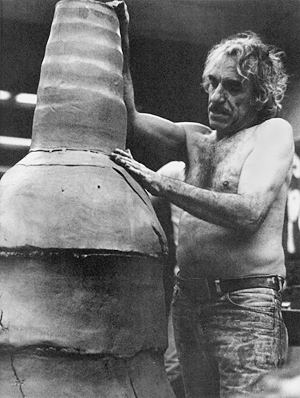
In 1953, Voulkos was invited to teach a summer session ceramics course at Black Mountain College in Asheville, North Carolina. After the summer at Black Mountain, he changed his approach to creating ceramics. The artist eschewed his traditional training and instead of creating smooth, well-thrown glazed vessels he started to work gesturally with raw clay, frequently marring his work with gashes and punctures.
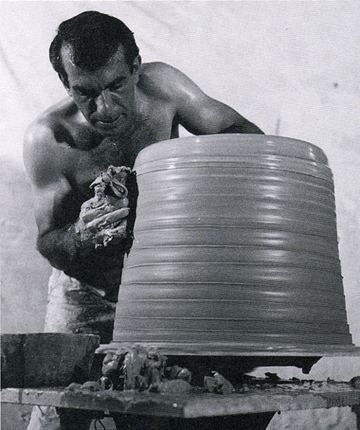
In 1954, after founding the art ceramics department at the Otis College of Art and Design, called the Los Angeles County Art Institute, his work rapidly became abstract and sculptural.
He moved to the University of California, Berkeley, in 1959, where he also founded the ceramics program, within the department of design and decorative arts. He became a full professor there in 1967, and continued to teach until 1985. Among his students were many ceramic artists who became well known in their own right.
Death
He died of a heart attack on February 16, 2002, after conducting a college ceramics workshop at Bowling Green State University, Ohio, demonstrating his skill to a live audience.
Personal life
Voulkos is survived by his first wife, Margaret Cone, and their daughter, Pier, polymer clay artist; his wife, Ann, and their son, Aris; and his brother and two sisters.
Legacy
Voulkos's sculptures are known for their visual weight, their freely-formed construction and their aggressive and energetic decoration. During shaping he would vigorously tear, pound, and gouge their surfaces. At some points in his career, he cast sculptures in bronze; and in early periods his ceramic works were glazed or painted and/or finished with painted brushstrokes. In 1979 he was introduced to the use of wood firing in anagama kilns by Peter Callas, who became his collaborator for the next 23 years. Most of Voulkos's late work was wood-fired in Callas's anagama, which was located at first in Piermont, New York, and later, in Belvidere, New Jersey. This unique partnership, and the resulting work, is considered by many curators and collectors to be the most exuberant period of Voulkos's career.
Among the public collections holding work by Peter Voulkos are the American Museum of Ceramic Art (Pomona, California), di Rosa (Napa, CA), the Honolulu Museum of Art, the Japanese Folk Crafts Museum (Tokyo), the National Gallery of Victoria (Melbourne, Australia), the Metropolitan Museum of Art, the Museum of Modern Art (New York City), the National Museum of Modern Art, Kyoto, the Oakland Museum of California, the Philadelphia Museum of Art, the Smithsonian Institution (Washington, DC), the Stedelijk Museum Amsterdam, the University of Iowa Museum of Art, and the Victoria and Albert Museum.
